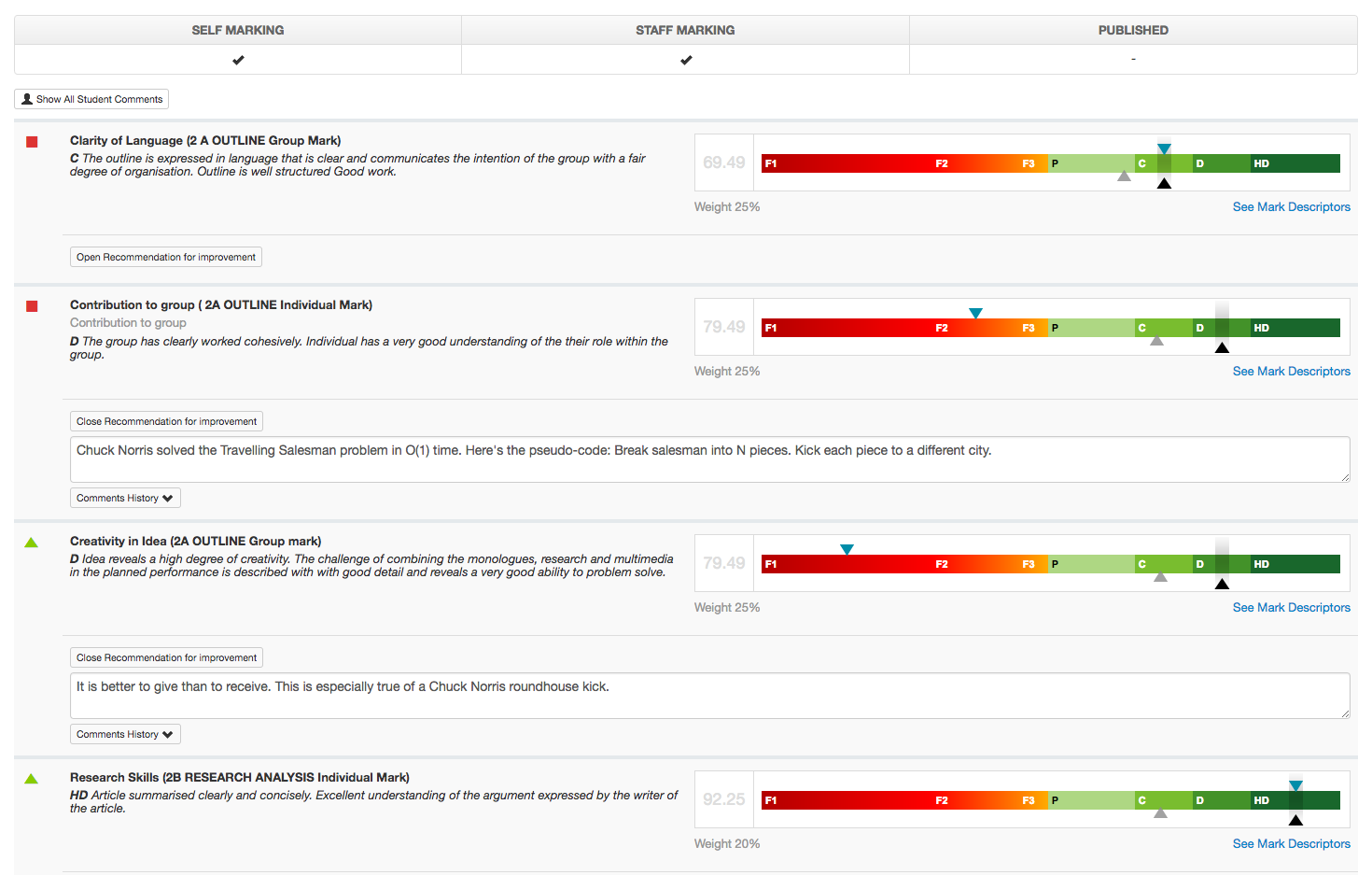
Student self-assessment occurs when learners (students) assess their own performance and is primarily used to help students develop specific learning skills that they will need for professional competence. This process may assist in making students more aware of and more responsible for their own learning process.
Skilled self-assessment can be as reliable as other forms of assessment, however as an educator you must provide students with the right guidance and practice if you want results to closely align with the results from other assessors’. In most cases it is beneficial to introduce your students to the idea of self-assessment using — formative learning. Early on, this can be achieved by using an online quiz that gives each student instant feedback on their performance, for example. As student progress they can be guided to use a more summative form of self assessment for example, grading their own performance.
Key Benefits of Student Self-Assessment
- Helps to develop important meta-cognitive skills that contribute to a range of important graduate capabilities. All professionals must be able to evaluate their own performance, so this practice should be embedded in higher education learning as early as possible.
- Increases self-awareness through reflective practice, making the criteria for self-evaluation explicit, and making performance improvement practices intrinsic to ongoing learning.
- Contributes to the development of critical reviewing skills, enabling the learner to more objectively evaluate their own performance—and others’, when used in conjunction with peer assessment. With peer assessment they become more practised in giving constructive feedback, and receiving and acting on feedback received.
- Helps students to take control of their own learning and assessment, and giving them the chance to manage their own learning and development more independently.
- Gives students greater agency regarding assessment, thus enriching their learning.
- Possibly, in the long run, reduces the teacher’s assessment workload—although on its own this benefit is not sufficient to introduce student self-assessment.
Design self-assessment carefully, and ensure that you integrate its use into the assessment plan. This way you optimise the benefits to learning, appropriately engage students in the process by giving them clear directions and explanations, and ensure that contingency plans are in place for if issues arise. Combining student self and peer assessment with tutor assessment makes for a more reliable grade (Dancer & Kamvounias, 2005).
“In my experience, the most successful method has been an introduction by the unit coordinator in combination with tutors who genuinely value the student gradings and demonstrate this feature by marking a piece of work in a large lecture context. Involving students in this live marking activity engages both them and the tutors in further understanding the criteria…”
Dr Darrall Thompson, UTS.
In addition to becoming an integral part of the learning process, student self-assessment plays an important role in closing the loop throughout the Assurance of Learning (AOL) process for many universities, in particular business schools. Whether the primary purpose of implementing an AOL solution is to ensure students that students achieve the goals set for them by their institution or to gain Association to Advance Collegiate Schools of Business (AACSB) accreditation. Academ’s REVIEW software enables students to self-assess their own work against specific criteria and monitor their disciplinary skills. Using a longitudinal approach to assessment REVIEW allows Universities to automate marking of criteria-based assessment of students, formulated by program learning goals and graduate attributes.
An example screen of the REVIEW software be seen here, with student self marking indicated by the blue arrows:

*Click on the image to view details at a higher resolution*
Interested in introducing student-self assessment to your institutions marking process for Assurance of Learning (AOL), AASCB accreditation purposes or simply to enrich your students academic development?
Get in touch with Academ today to arrange a free demonstration of the REVIEW platform for your organisation.